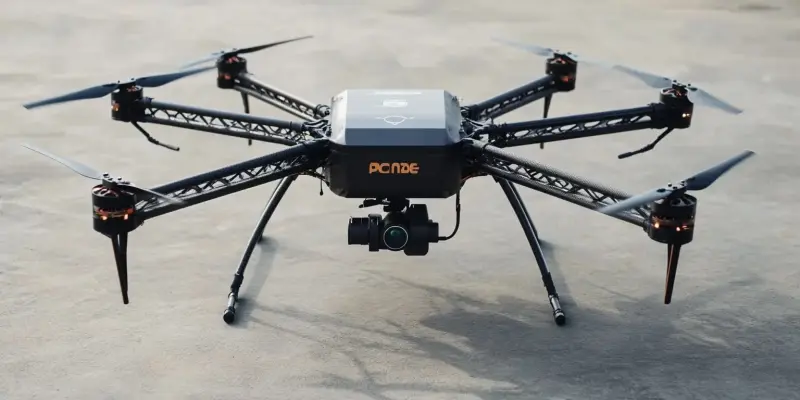Drone technology is rapidly evolving, but with this advancement comes the need for robust security measures to manage these devices effectively, especially in complex and busy environments. Unifly, a subsidiary of Terra Drone Corporation, recently conducted a significant demonstration of their blockchain-backed UAS Traffic Management (UTM) system at the Port of Antwerp-Bruges. This effort was part of the Certiflight project, which aims to leverage both blockchain and Galileo-based Open Service Navigation Message Authentication (OSNMA) technologies to enhance operational efficiency and security.
Enhancing Real-Time Monitoring and Security
The Port of Antwerp-Bruges trial showcased several critical aspects of Unifly’s UTM system, including real-time flight monitoring, which ensures that drone activities are constantly tracked and managed. The platform effectively visualized drone flight paths, differentiating authenticated tracking data from unverified signals. This differentiation is crucial to maintaining security and ensuring that only authorized drones operate within designated airspace. The integration of OSNMA’s precise location data with blockchain’s robust security measures also played a vital role in preventing spoofing incidents and any unauthorized data tampering, ensuring a secure and reliable drone monitoring environment.
Moreover, Unifly’s UTM system streamlined the approval process for drone operations by transmitting authenticated flight data directly to certification platforms. This seamless integration simplifies interactions with airspace authorities, ensuring regulatory compliance is maintained without compromising operational efficiency. The blockchain-backed approach not only enhances the integrity of the flight data but also ensures that all drone operations within the port’s airspace are documented accurately and securely, paving the way for more accountable and transparent drone activities.
Certiflight’s Approach Validated
The demonstration at the Port of Antwerp-Bruges served as a critical validation for Certiflight’s innovative approach to documenting low-altitude flight data securely. By incorporating Digital European Global Navigation Satellite System (EGNSS) and Internet of Things (IoT) technologies, Certiflight’s method ensured both integrity and accurate location verification. The successful trial underscored the potential of blockchain-backed UTM systems to significantly enhance transparency, safety, and accountability in complex environments. This approach could serve as a benchmark for future implementations, ensuring that drone operations are secure and meet the highest standards of regulatory compliance.
This trial also highlighted the importance of adopting cutting-edge technologies in drone management. With the growing number of drones in various operational settings, there is an increasing need for systems that can handle the complexity and ensure safety. Certiflight’s approach not only addresses these concerns but also sets the stage for future advancements in drone technology management. By validating this system at one of the busiest ports in the world, Unifly has demonstrated that its blockchain-backed UTM can provide a reliable and efficient solution in demanding operational settings.
Future Prospects and Global Expansion
Drone technology is advancing at breakneck speed, but this rapid progress necessitates strong security measures, especially in complex and busy areas. Unifly, a subsidiary of Terra Drone Corporation, has risen to this challenge by recently showcasing its blockchain-backed UAS Traffic Management (UTM) system at the Port of Antwerp-Bruges. This demonstration was a key part of the Certiflight project. The Certiflight initiative aims to combine blockchain technology with Galileo-based Open Service Navigation Message Authentication (OSNMA) to boost both the operational efficiency and security of drone management systems. By integrating these technologies, Unifly hopes to create a more reliable and secure framework for managing drone traffic, particularly in environments that are both busy and complex. This demonstration not only highlighted the practical applications of such advanced technologies but also underscored the importance of continual innovation in ensuring safe and efficient drone operations.

